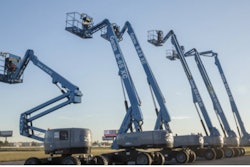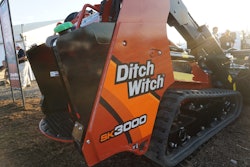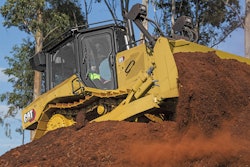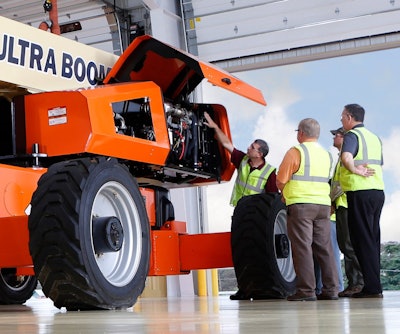 A JLG training class
A JLG training classEditor’s note: This is the first installment of a three-part series on how the new ANSI standards for aerial work platforms will affect contractors. You can view Part 2 by clicking here. Part 3, which you can view here, examines whether contractors are ready to comply.
Starting June 1, contractors who use telescopic-boom, articulated-boom or scissor-lift aerial platforms will face a multitude of changes in how the machines are operated and who can operate them.
That’s because new national safety standards governing aerial work platforms will take effect, an industry milestone that has been discussed and delayed for several years. The standards were finally published by the American National Standards Institute on December 10, 2018, with their effective date being one year later. The effective date, however, was recently delayed until June 1 to deal with appeals to the standards. The standards do not affect truck- or trailer-mounted booms or telehandlers. Aerial lifts built before June 1, when the standards are scheduled to be enacted, are grandfathered in.
Though the standards are voluntary, the U.S. Occupational Safety and Health Administration can refer to them when there is an accident or if they see a violation of OSHA rules. Aerial industry members also point to the potential liability should an accident occur and the industry’s “best practice” standards were not followed.
“They would point back to the standards being best practice and you chose not to follow them,” says Rick Smith, JLG senior director of global product training. “Anytime, if there’s an injury or a fatality, certainly the lawyers are going to be looking at that.”
Standards for everyone
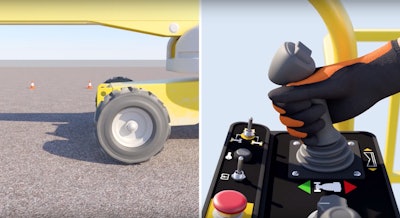 IPAF members offer online ANSI training for MEWPs
IPAF members offer online ANSI training for MEWPsThe question for contractors then becomes whether to gamble on keeping things business-as-usual or to comply. Even if they don’t comply, they will likely run up against the new standards. That’s because the ANSI changes affect not just contractors but all manufacturers of aerial work platforms, as well as those who rent, sell and maintain them.
“It really affects the entire industry, every stakeholder, from the manufacturer to the occupant,” says Tony Groat, North American manager for the International Powered Access Federation.
The standards even change the name of the devices. When you go to rent an AWP, you might hear your rental dealer saying, “Mewps.”
Though that sounds like something you got vaccinated against, you’ll learn they’re actually sounding out the acronym “MEWP.” That stands for “mobile elevating work platform,” what the devices are now called under the new standards.
A contractor could also unknowingly rent an aerial platform that has the new ANSI design standards and find it unexpectedly cutting off when performing tasks previously done with no problem.
“If an operator is used to driving a (Genie) GS1930 scissor lift manufactured in 2017 and they get on a lift that’s manufactured in late 2019 or 2020, they’re going to be in for a surprise because a lot of things are going to be changed on this equipment,” says Genie senior trainer Scott Owyen.
They might also find larger contractors requiring ANSI-compliant lifts on their jobs.
“My anticipation is that a lot of the major contractors are going to come out and say we want new-standards machines on our jobsites,” says Chad Hislop, Genie senior product manager. “And as that switches, we’re going to see the fleets change over to machines that are up to the new standards.”
And then there’s just the overall sense of doing the right thing. Do you want to be that contractor who doesn’t meet the latest safety practices?
If your answer is no, then here’s what you need to do to get ready for the new ANSI standards.
Get trained
 Genie offers training
Genie offers trainingBetween now and June 1, if you’re a contractor, all of your operators need to be trained to the new standards.
The standards not only require operators to be trained, but their supervisors, as well. To comply, the training must be based on the new standards. Training that does not include the new standards would not qualify.
For operators, the training includes general-knowledge and practical-application components. The general-knowledge portion, which takes three hours or so, can be instructor-led or completed online. Operators must also demonstrate proficiency in operating the aerial lifts, which takes about 5 hours, but can be longer depending on the size of the class and how many different MEWP types a candidate is seeking certification for. The practical application can be completed at a rental dealer, a manufacturer or trainer’s location, or in the field if a trainer is available to come out.
Supervisors of anyone operating an aerial lift must undergo the same classroom or online training as the operator, but they are not required to undergo the hands-on component.
A contractor could also send someone to a train-the-trainer course. The trained person could then conduct training for the contractor’s operators and supervisors.
Don’t wait
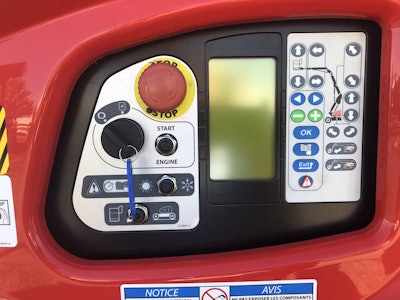 Manitou ground control panel on TJ model telescopic boom
Manitou ground control panel on TJ model telescopic boomThe training covers such topics as selecting the proper aerial lift for the job, potential hazards and ways to protect against those hazards. Operators also need to know that any occupant in an aerial work platform must be instructed in basic work safety procedures. The operator must provide them with a talk on such matters as fall protection, how their actions can affect the lift’s stability, and safety accessories they will use.
At least one of the occupants must be taught how to operate the controls in an emergency. “It’s a detailed, not quick, discussion that has to take place before they can go up in the air,” Owyen says.
Details on training courses can be found on manufacturers’ websites, the IPAF website at ipaf.org and through rental dealers. After completing the training, certificates are issued. Those who complete the training courses also receive a wallet-sized card they can show inspectors to prove they have been trained.
Manufactures such as Genie and JLG say their in-person training programs are full through the end of the year, so contactors shouldn’t wait to line up training.
“We’ve seen an exponential ramp-up in our customers asking about the new ANSI standards,” Hislop says. “All of our major customers are making phone calls saying, ‘Hey, can you come out and talk to us about this?’”
IPAF does not provide training, but its members do, and Groat says training slots are still open, as well as online courses.
“If you want training, it’s available,” Groat says.
– Equipment World Editorial Director Marcia Doyle contributed to this report.
Editors’ note: This story was updated to reflect the new effective date for the ANSI standards.
Want to learn more?
Here are some websites to check out for more information on the ANSI standards and training:
- International Powered Access Federation: https://bit.ly/IPAFtrain
- Genie: https://bit.ly/GenieANSI
- Skyjack: https://www.skyjack.com/training
- JLG: www.jlg.com/en/training (train the trainer courses)
- To purchase a copy of the new ANSI A92.20 standards: https://bit.ly/MEWPsANSI





